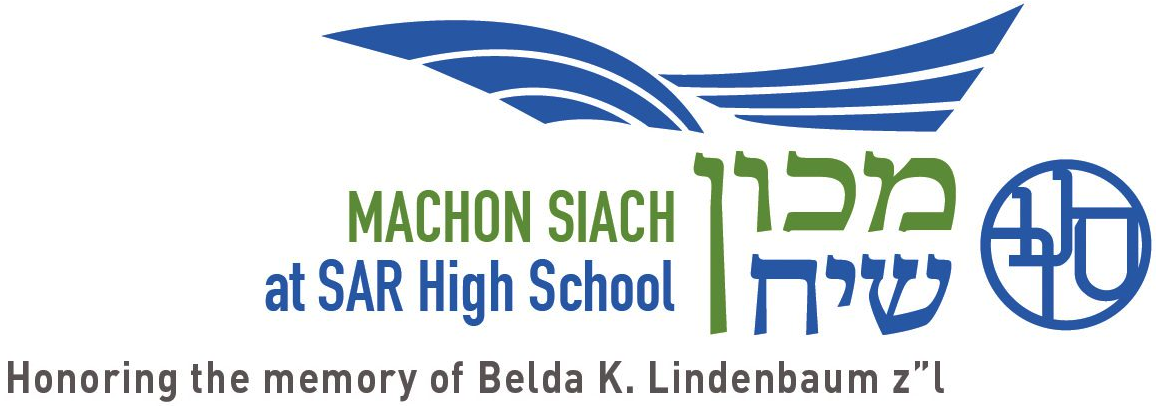
Teaching and Learning with AI
For the past two years, Generative AI technology has been making headlines with its increasing ability to process and respond to complex questions, generate computer code, create art and poetry, and write essays and research papers. Teachers and students have been swimming in this sea of rapid change. This year, as part of our Faculty Beit Midrash learning, a cohort of our faculty have been taking a deep dive into AI in education. We have been reading books and articles helping us grapple with many of the questions AI raises about authorship, creativity, student skills for the future, equity, discrimination and more.
In our group, there is excitement, a strong dose of uncertainty, and some understandable fear around the power of this technology and its impact on our classrooms as well as every industry. One of the key concepts we explore in economics classes is “creative destruction,” a phrase coined by Joseph Schumpeter in the 1940s that describes how the “creation” of new and innovative products, services, or practices “destroys” the old way of doing things. According to this theory, society is better off in the long run as innovation leads to improved efficiency and scarce resources can be put to greater use. Some businesses and individuals benefit greatly from the disruption as they are able to create new opportunities for themselves and others. However, in the short run, those who remain committed to the older methods or technology may be hurt as their skill set becomes obsolete. Textbook examples of creative destruction include the assembly line, computers, and the internet. A now famous quote attributed to Professor Karim R. Lakhani of Harvard University is, “AI won’t replace humans — but humans with AI will replace humans without AI.” Given the power of large language models and the rapidity with which a range of industries are adopting generative AI and increasing the efficiency of their workforce and operations, we are in the midst of another watershed moment of creative destruction.
What does this new technology mean for what we teach and how we teach it? Now that we all have a tool that can mimic human thought and writing, what skills are most important for our students to master? These will be the questions to answer over the coming months and years, and they apply to all levels of education, from elementary school through college and beyond. In the midst of the continuing deluge of new apps and functionality, how can educators approach this exponentially evolving technology and help our students use it effectively, safely, critically, and honestly? As we all simultaneously learn how to best harness its power, teachers will lead by example as we explore, experiment, and educate ourselves and our students.
Teachers already recognize that AI can assist with administrative and other tasks, from lesson and rubric development to text differentiation. Sharing with students how and when we utilize the technology will help students better understand appropriate use. When authorship is not purely our own, educators should acknowledge that fact so students know and learn to do the same.
Our students still need to learn and master writing and analytics skills, but now there are new digital tools and skills they need to learn and master as well. We will increasingly need to change the design of our assessments and potentially modify learning outcomes – the goals of our teaching – given the ease of student access to generative AI and the increasing sophistication of its output. As the Wall Street Journal recently reported, students are the most common users of the 400 million weekly users of ChatGPT. In his book, Co-Intelligece, The Wharton School professor, Ethan Mollick, describes the Homework Apocalypse that AI has engendered. To avoid students relying too heavily on AI in their essays, written responses or other out of class assignments, teachers have begun to move more practice work and writing into the classroom and integrate more process-oriented assessments with increased opportunity for students to share their thinking, voices, and writing as they receive more teacher feedback at each juncture in their move toward a final product.
We also need to think about how to help students learn when and how to use this technology while still fully developing their analytical and writing skills. AI can serve as a learning support when it is used to help students better understand a complex text or concept or help them brainstorm how to get started on a piece of work. In my economics classes, we have used AI platforms to create sleek and creative product logos and other marketing tools that have helped students move beyond their own artistic skills and focus on their marketing message. Students have interacted one on one with an AI chatbot to check for and reinforce individual understanding of monetarist theory. In an English class,12th grade students and their teacher are experimenting with Chat GPT to provide revisions and critiquing AI feedback for tone, clarity and organization. Students need to know how to use AI in a way that will provide the desired outcome, and they can better hone this new skill when generative AI is part of the learning process.
Use of generative AI output requires a critical eye. Tools such as ChatGPT still generate incorrect facts and fake citations, although they do so with decreasing frequency. Incorporating technology into learning and assessments will allow students to examine generative AI output critically and better identify the chatbot’s incorrect information and/or any biases. Whenever students complete research, they need to verify the sources they use for reliability, accuracy, and objectivity. AI output requires the same check of its output as it can “hallucinate” its textual references and sources. Given all the internet data used to generate the AI output, the results may not always be balanced, so digital citizenship lessons are especially important. We also need to educate students around privacy concerns and other risks of generative AI. While some AI platforms have guardrails to help prevent the spread of private data or offensive content, not all AI tools have these safeguards, and students need to be aware of the dangers that exist.
As educators, we want to teach students how to think and write critically, analytically, and creatively. We want to build their skill sets and provide them with a strong foundation on which to continue to expand and deepen their thinking, knowledge, and abilities. Student work should ultimately reflect their thinking and output, but we all now have a new and powerful tool at our side which can and will be utilized as part of the business of education and every business. As educators, we have an exciting opportunity as we embark on and explore this evolving landscape with our students this year and beyond.



